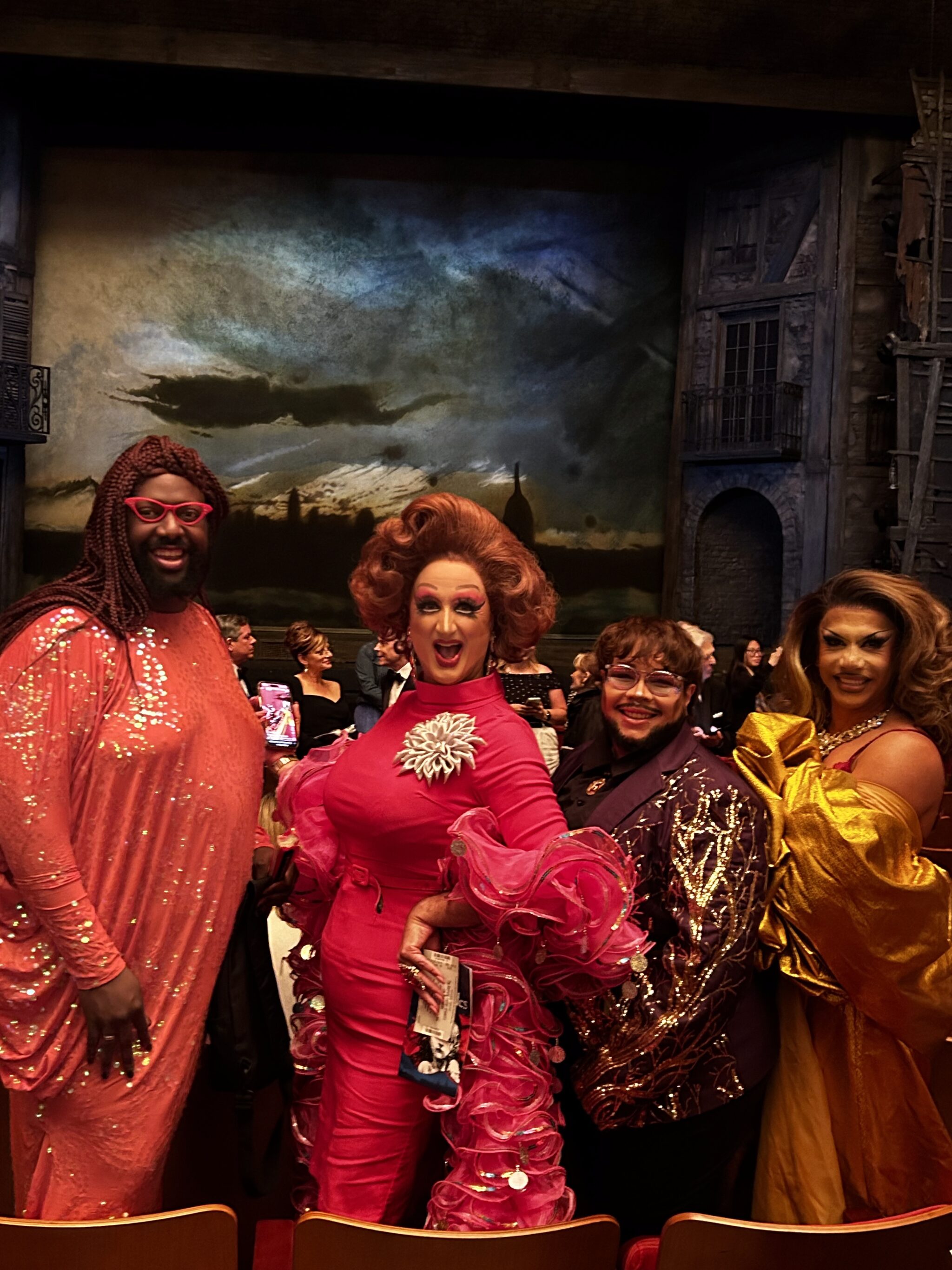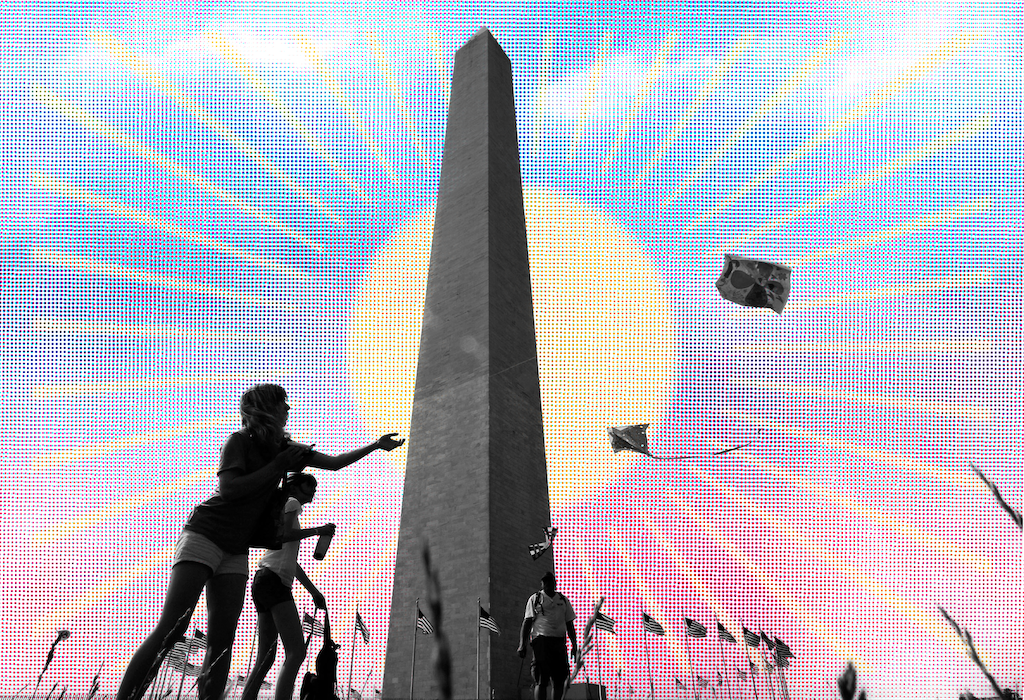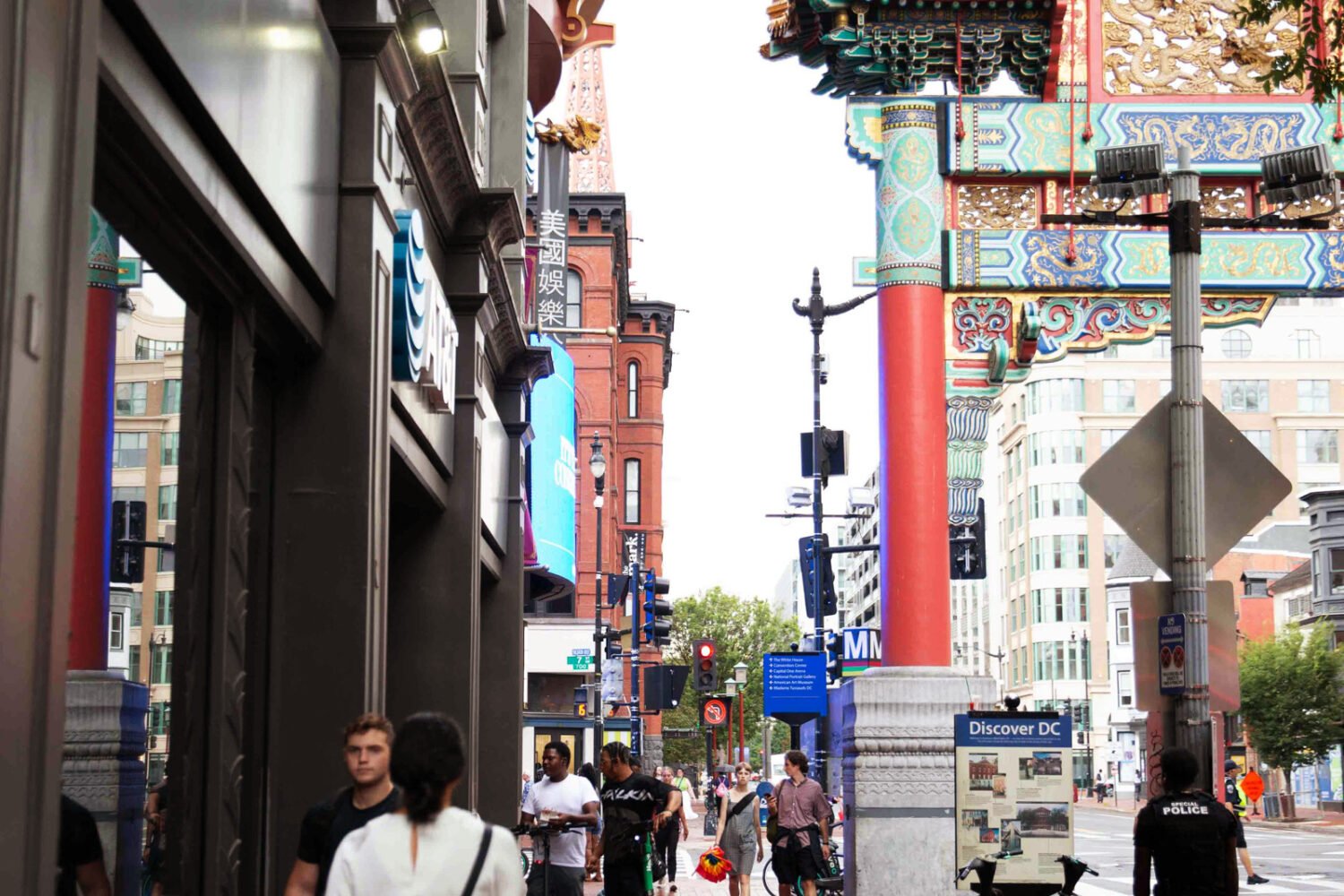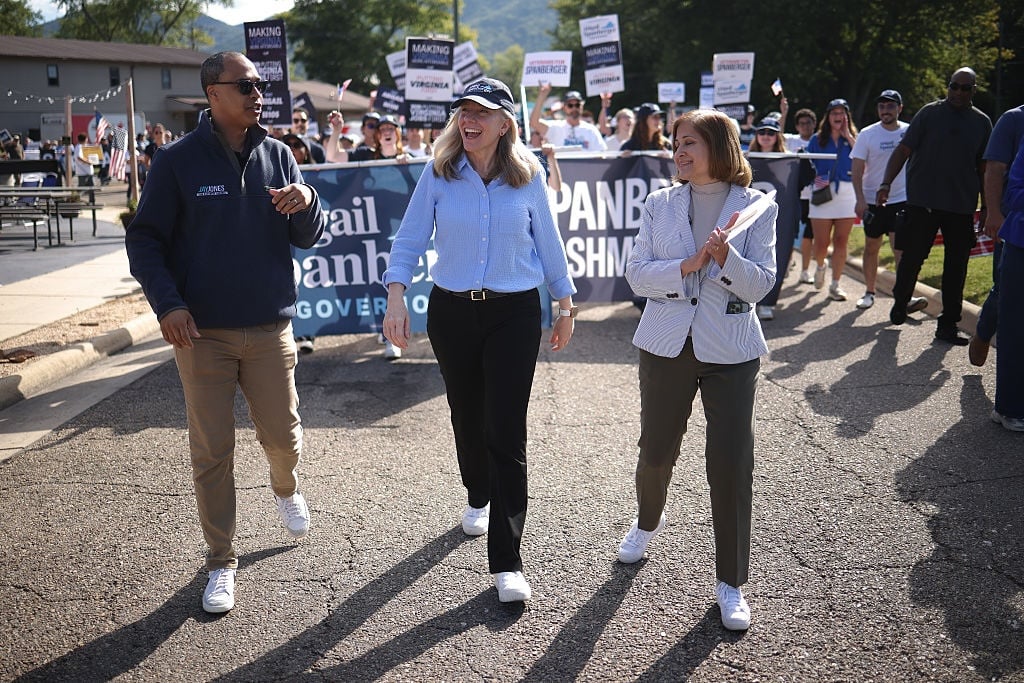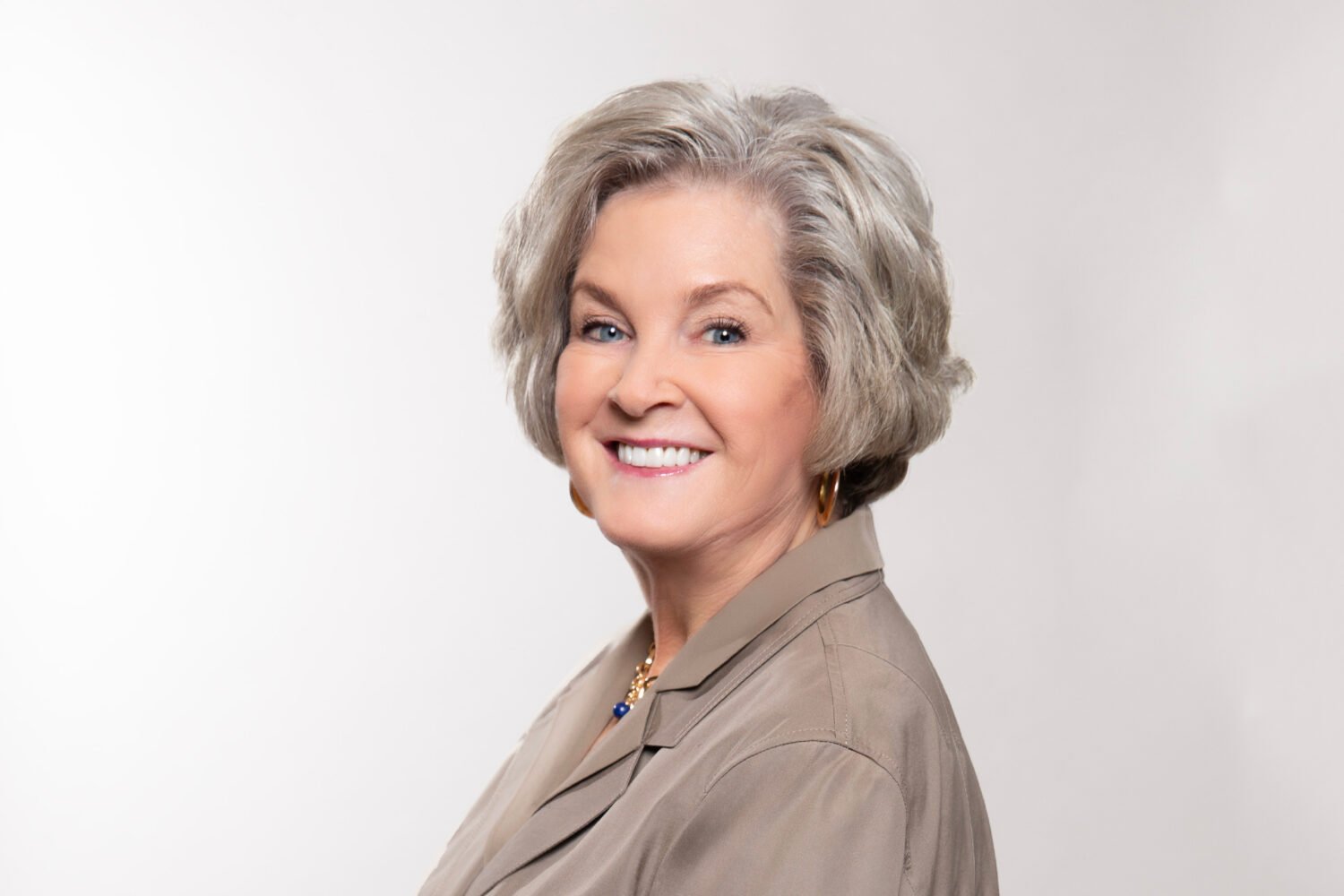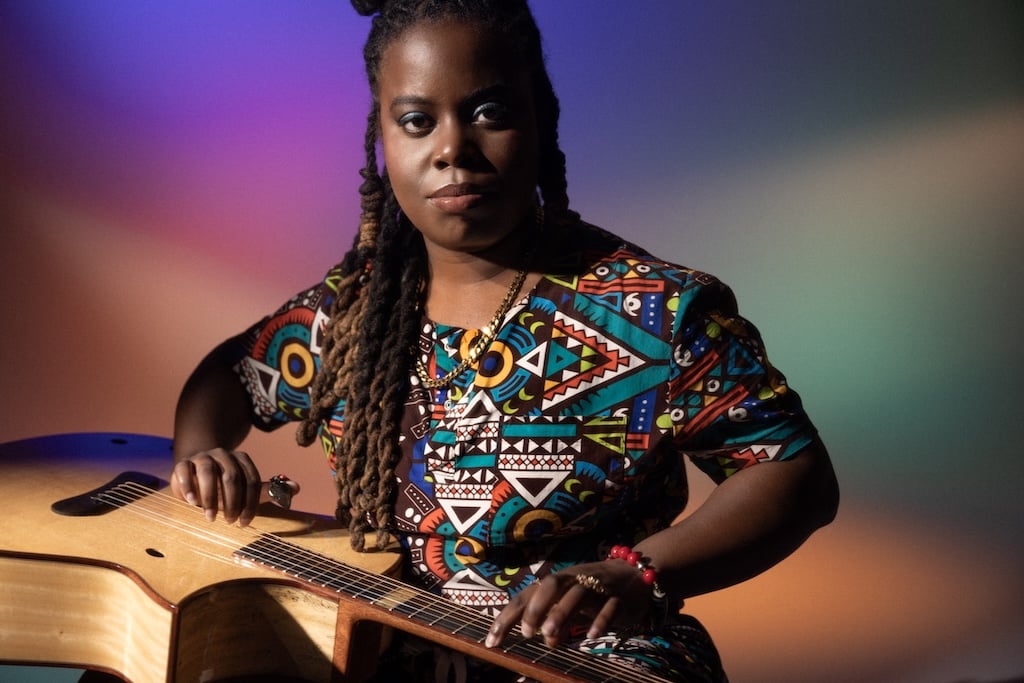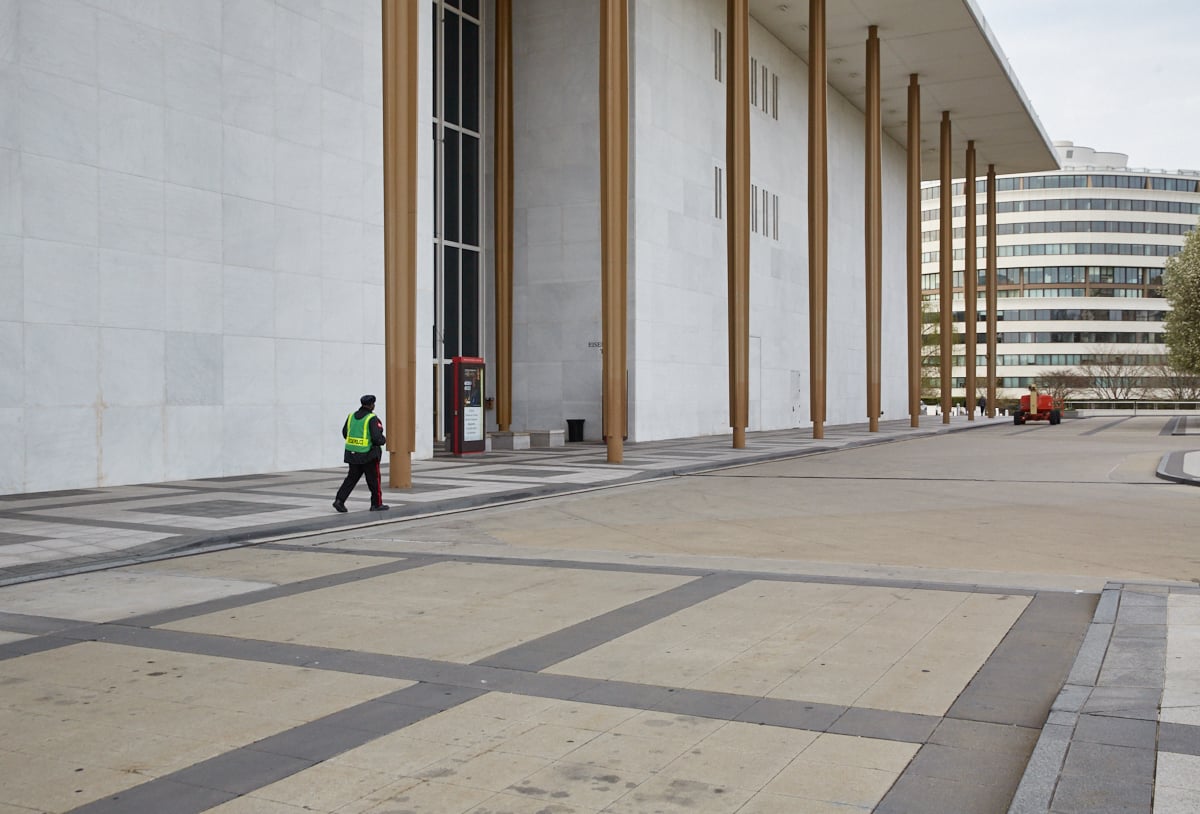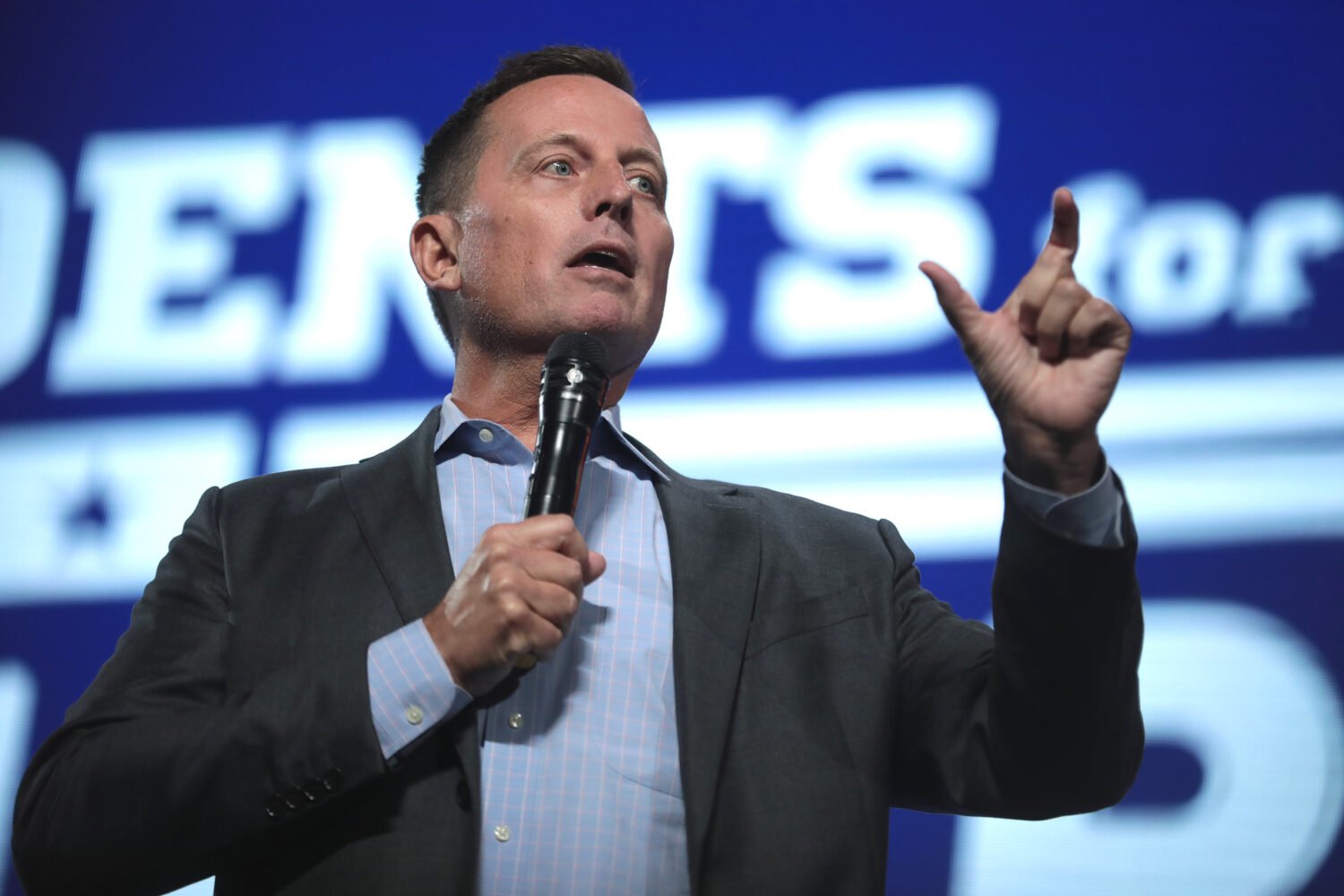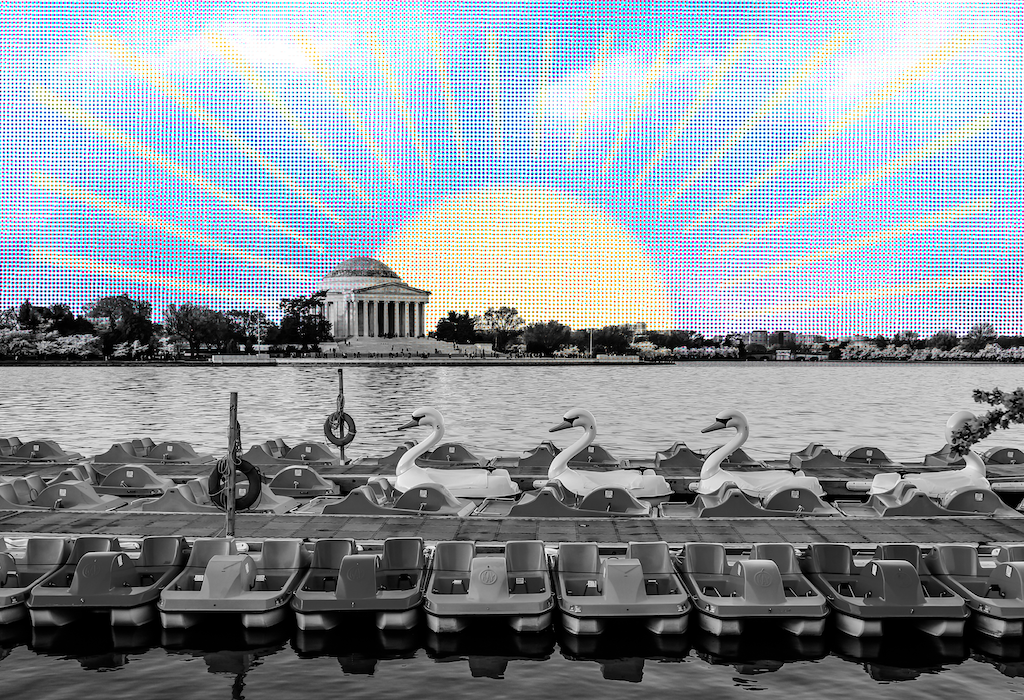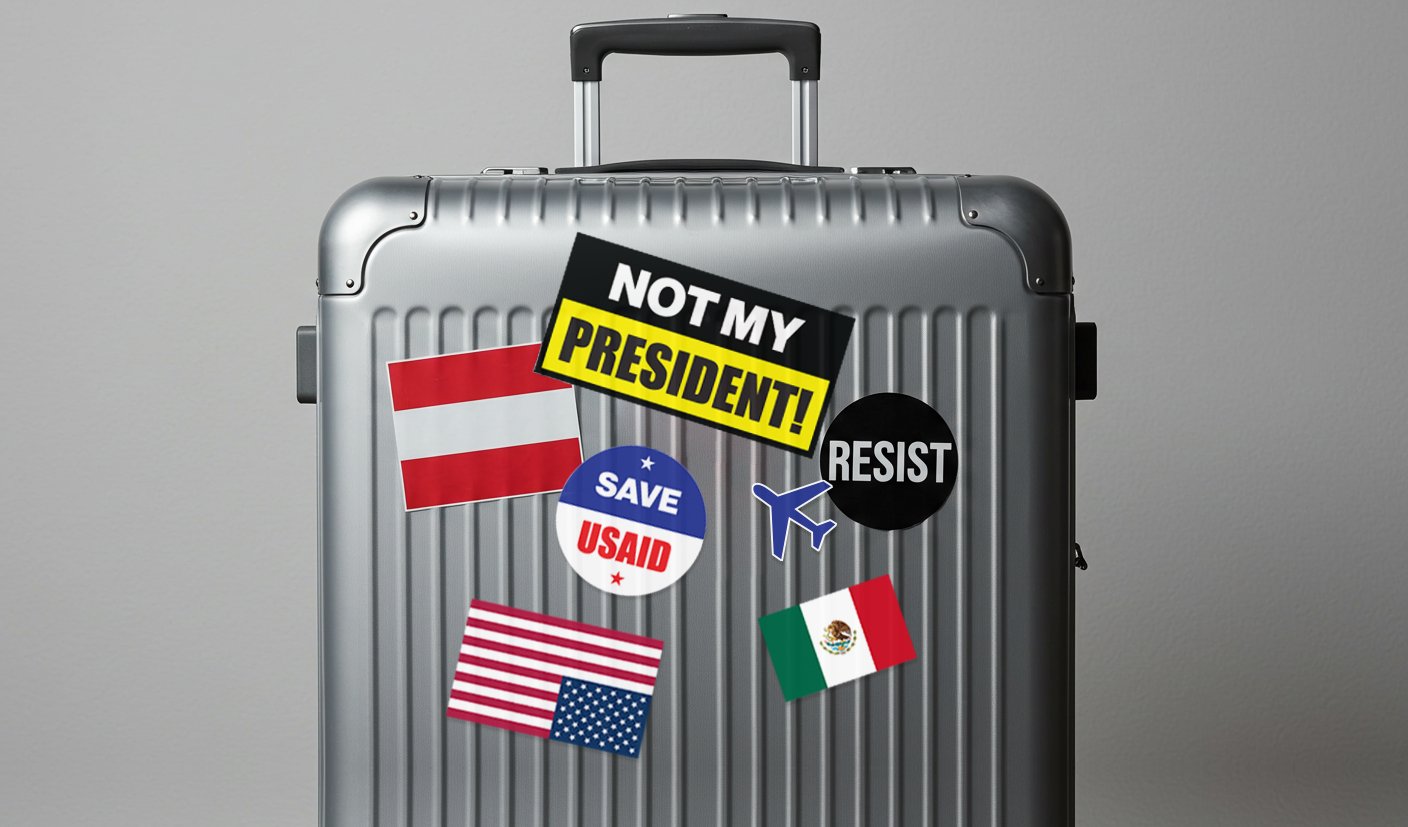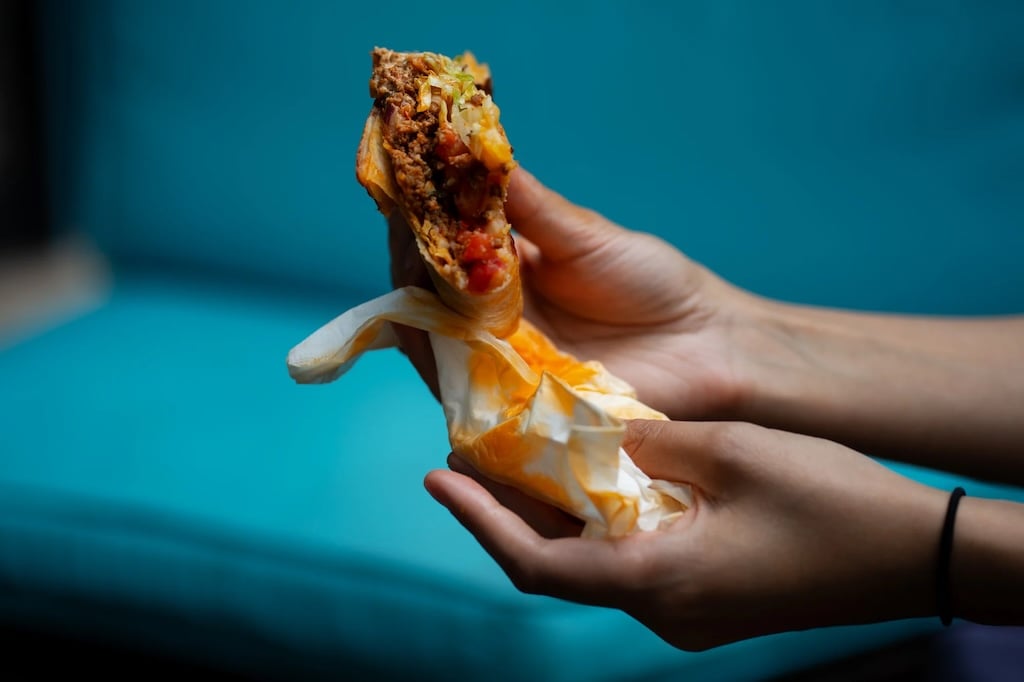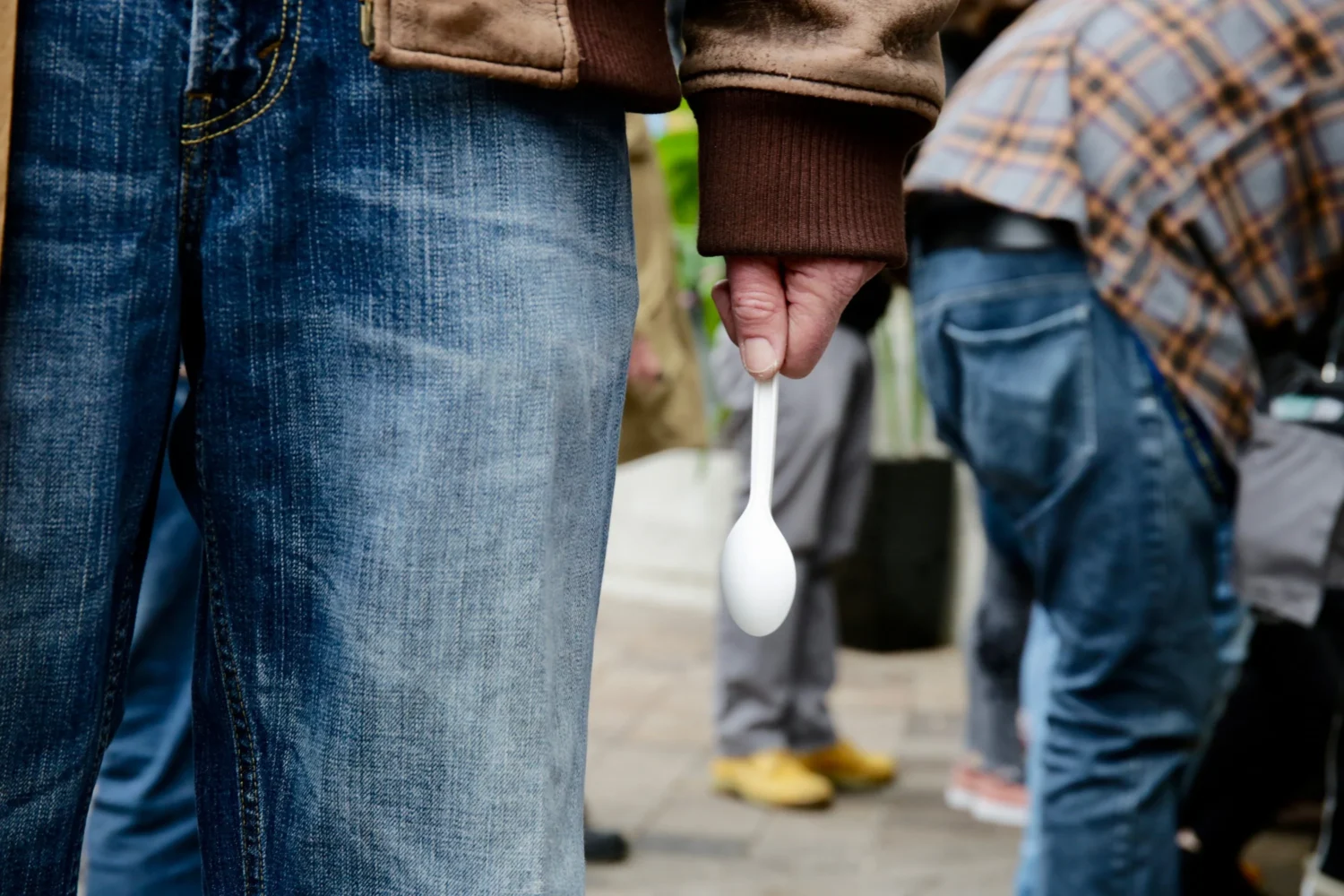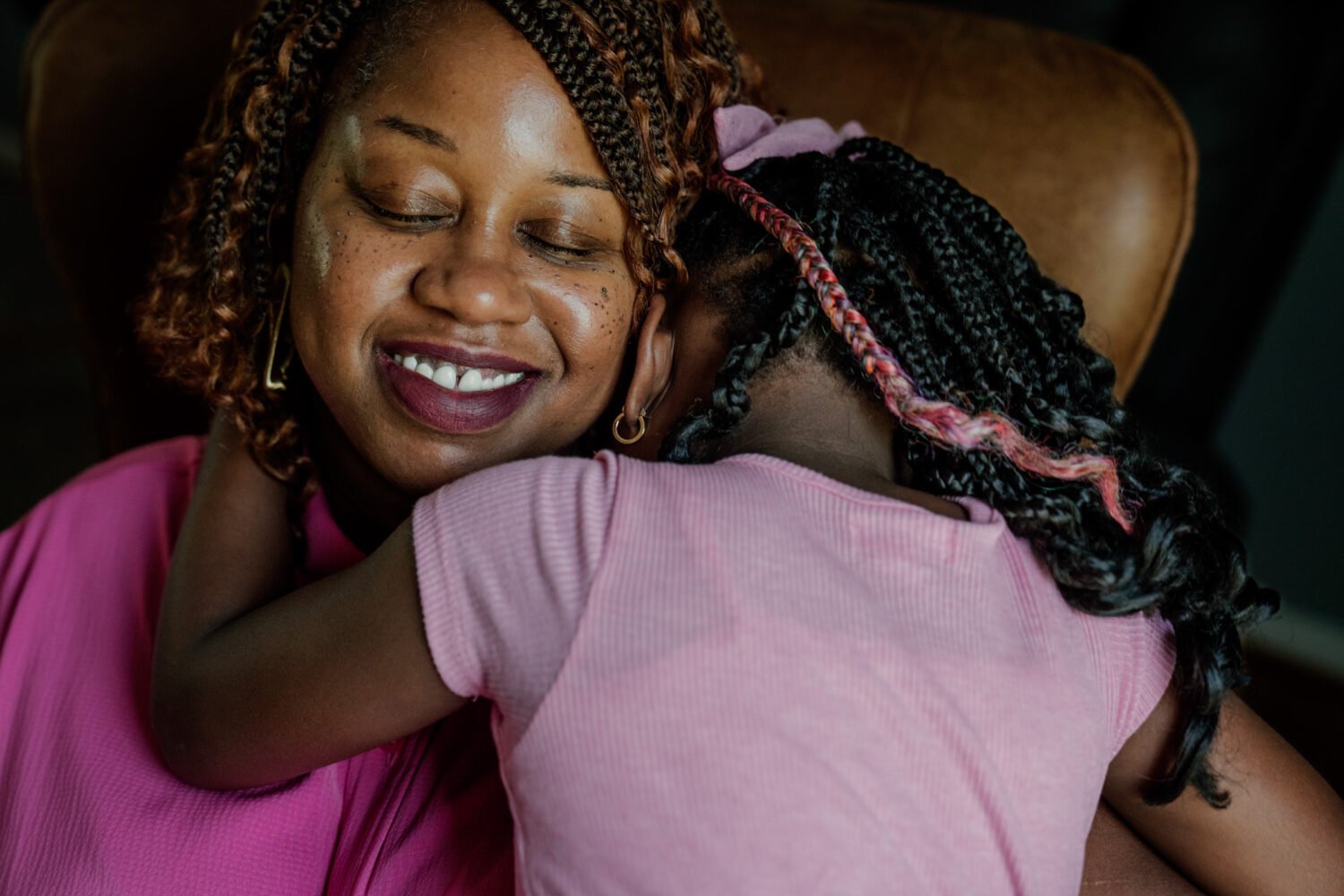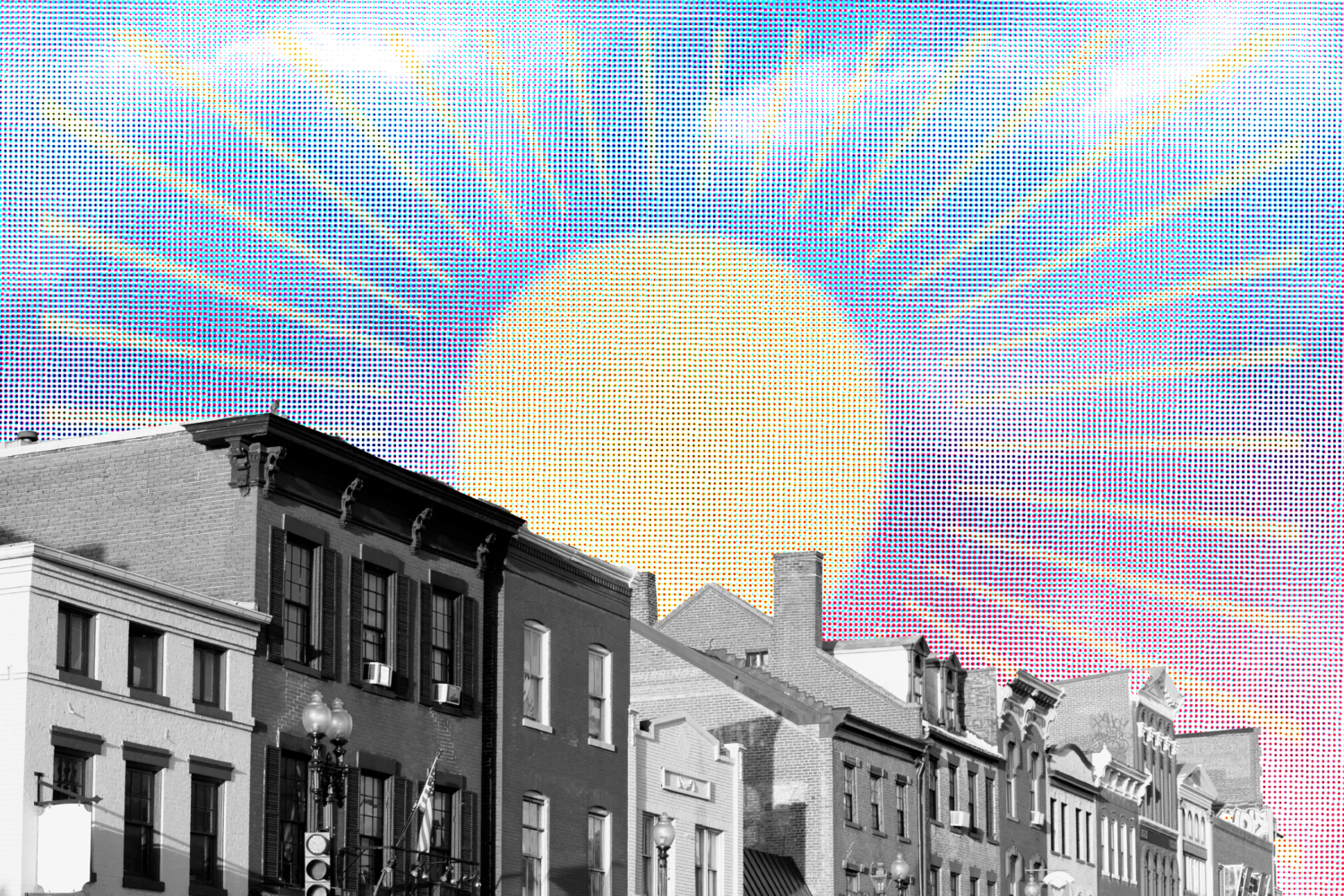Last night, President Trump made his debut Kennedy Center appearance at the theater’s premiere of Les Misérables—the first Broadway musical to visit the Opera House since his second administration began. His presence elicited boos, cheers, and a striking air of irony, given the show’s basis in the French June Rebellion. Also in attendance: A coalition of DC-based drag queens, filling seats left vacant by ticketholders who boycotted the performance to protest Trump’s takeover of the arts and culture hub.
Local drag performers Tara Hoot, Vagenesis, Ricky Rosé, and Mari Con Carne donned glittering gowns, voluminous wigs, and vibrant makeup—bringing some panache to an audience dotted with the likes of far-right influencer Laura Loomer, Texas Senator Ted Cruz, and several of Trump’s appointees, including interim Kennedy Center president Ric Grenell.
Wednesday’s action came together in a matter of days: Last week, Julian Applebaum—an organizer with Qommittee, a national network of drag performers and allies—learned that one of his friends, a Kennedy Center season ticketholder, was skipping Les Mis due to Trump’s attendance. On a whim, Applebaum asked if he’d be willing to donate his family’s unused tickets to a local drag queen; his friend agreed, and Applebaum took to Reddit to source the rest. He secured six tickets in total, although only four drag performers made it to the theater. There was some concern over whether the plan would pan out: “I was nervous because we just had no idea what the reception was going to be, if we were even going to be allowed inside—even though there’s no official dress code for the Kennedy Center and we were ticketed,” Hoot tells Washingtonian.
But inside the venue, the reaction to the queens was “overwhelmingly positive,” according to Hoot. “The regular Kennedy Center staff were really warm in greeting us and thanking us for being there and telling us how gorgeous we were—I, of course, then told them how gorgeous they were,” she says. “When the doors [to the theater] opened, we walked in and got a nice round of applause from people. We sat next to some of the relatives of cast members, and I had heard that the cast was really delighted that we were there to see the show.”
The queens’ presence was the latest ripple in a wave of pushback against the administration’s targeting of drag programming at the Center—a cornerstone of its overhaul mission, although an NPR analysis found that last year’s calendar featured only a handful of drag events. Previous protests have featured picket signs, Pride flags, and chanted slogans; Wednesday’s was different. Apart from contributing a couple boos upon Trump’s entry, the queens were just there to see the show. “The simple act of going out in a face of drag makeup is in and of itself a protest,” Vagenesis tells Washingtonian. “The ‘we’re here, we’re queer, get used to it’ mantra is cliché, but it has a lot behind it.”
Drag advocates encourage allies to do their part by boycotting the center. “Hit them in the pockets,” Vagenesis says. “Get your refund for your tickets, stop subscribing, stop going to the shows.” It seems like Washingtonians are one step ahead of that call to action: Ticket sales and subscription revenue have nosedived since Trump gutted the board in February, according to data obtained by the New York Times. (Not to mention that many planned acts have canceled their appearances at the Center—including about a dozen Les Mis cast members who refused to perform for the President.) By Hoot’s estimate, the main seating area was only about three-quarters full last night. “While we’re on the topic, anyway, the Kennedy Center is not a representation of local art,” Vagensis says. “There are so many fantastic theaters that are DC-based, that are hiring DC artists who are making phenomenal theater.”
For the queens, the affectionate reception from fellow audience members reinforced their conviction that just existing in drag would be enough to make a statement. “This, for me, is a little bit of a reminder that you can decide to ban whatever programming you want at the Kennedy Center—we can still show up there,” Vagenesis says. “We can still go there and say, ‘We’re going to continue to bring drag to the Kennedy Center.’”

